iPhone, iPad, iPod and Mac: 2013 back to school buyers guide!

The definitive guide to everything Apple: Which iPhone, iPod, iPad, and Mac should you buy before you - or your loved one - goes back to school!
There's nothing more stressful for parents or students than the annual back-to-school insanity that prefaces the actual return to educational institutions across the land. From kindergarten to grade school to high school to college, from clothes to supplies to books to gadgets, there's so much to get done and so little time to do it. We feel your pain. It's our pain too. And while we can't help you with all of it, we can absolutely help you with the gadget part. Whether you're a parent shopping for your child, or a student trying to decide what to get yourself, here's every iPod, iPhone, iPad, and Mac made by Apple, and our buyer's guide for each and every one!
Important note: Apple will almost certainly release new iPhones, iPods, iPads, and Macs (with the exception of the Air) this fall. If you have to buy now, now, now, ignore that and get whatever's best today. If you can wait, however, you'll typically pay the same amount for better technology come September/October.
iPod shuffle

If you need an ultra-light, ultra-cheap way to take just your audio with you to class or simply to the gym, you want the iPod shuffle
Pros: 2GB of storage (enough for hundreds of songs, or dozens of audio books and recorded lectures), 15 hours of battery life. Convenient clip, available in blue, green, yellow, pink, purple, slate (black), silver (white), and red (Apple Store exclusive). Weighs only 12.5 grams, costs only $49.
Cons: Not iCloud-enabled, so needs to be managed via iTunes on Windows or Mac. No screen, no videos, no apps.
Bottom line: If all you need is something small and easy to replace to keep your sound with you on the way to class, while studying, or while you exercise, the iPod shuffle is for you.
- $49.99 - Buy now
iPod nano

If all you want is a small, light media player on the go, and you don't want apps, you want the iPod nano.
Pros: 2.5-inch multitouch display. 16GB of storage. Includes apps for music, podcasts, video, exercise (pedometer, Nike+). Includes Bluetooth and FM radios. Available in blue, green, yellow, pink, purple, slate (black), silver (white), and red (Apple Store exclusive). Weighs only 31 grams. Costs only $149.
Cons: Not iCloud-enabled, so needs to be managed via iTunes on Windows or Mac. No Wi-Fi. Built-in apps only. No iOS, App Store. No 32GB option.
Master your iPhone in minutes
iMore offers spot-on advice and guidance from our team of experts, with decades of Apple device experience to lean on. Learn more with iMore!
Bottom line: If the iPod shuffle isn't enough, but an iPod touch is too much, get the iPod nano. It can keep more than enough content around to get you through any travel, study, or gym time you need, in an incredibly small, light package.
- $149 - Buy now
iPod classic

If you need all your audio or a ton of video with you, everywhere, you need the iPod classic.
Pros: Can hold 40,000 songs, innumerable audiobooks or lectures, or 200 hours of video. 36 hours of battery life. Can store photos, play extremely limited games, serve as emergency file storage.
Cons: Not iCloud-enabled, so needs to be managed via iTunes on Windows or Mac. Small screen, no App Store.
Bottom line: If you need as much audio or video in your pocket as technologically possible - basically a giant hard drive in a tiny package - and nothing else, you need the iPod classic.
- $249 - Buy now
iPod touch
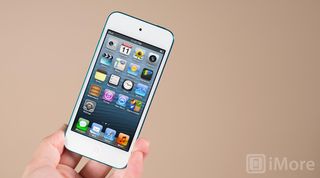
If you don't want a carrier contract, but you do want iOS in your pocket, get an iPod touch
Pros: 4-inch Retina display. Shoots 5mp photos and takes 1080p videos. 16GB (no rear camera), 32GB and 64GB options. Available in slate (black), silver (white), pink, blue, and red (Apple Store exclusive). Runs iOS, can play audio and video, read ebooks, and run hundreds of thousands of App Store apps and games.
Cons: No cellular option (3G/LTE). Smaller screen than iPad.
Bottom line: If an iPhone and all its apps would be perfect but you just don't want or need a phone (or are just too young for one!), and the iPad is just to big, get the thinner, lighter iPod touch.
- Starting at $229 - Buy now
iPhone
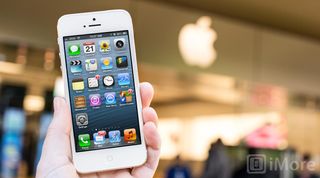
If you need a phone that just works, with tons of apps and media, you need an iPhone.
Pros: 4-inch Retina display. Shoots 8mp photos and takes 1080p videos. 16GB, 32GB and 64GB options. Available in slate (black) and silver (white). Runs iOS, can play audio and video, read ebooks, and run hundreds of thousands of App Store apps and games. Subsidized prices start at $199 on contract.
Cons: Requires a carrier voice and data plan.
Bottom line: If you need a phone, the iPhone can literally be your one iOS device to rule them all. If you need the ultimate in convergence, with mobile web, apps, and communications all in one place, get the iPhone.
More info: iPhone 5 review & feature guide
- Starting at $199 - Buy now (Gift card link)
Note: If you don't mind a shorter screen and no LTE, you can save $100 and get a 2011 iPhone 4S instead. If you don't mind a shorter screen, no LTE, no Siri, and worse cameras, you can save $200 and get a 2010 iPhone 4 instead.
iPad mini

If portability is more important to your than power or productivity, the iPad mini is for you.
Pros: 7.9-inch screen. Shoots 5mp photos and takes 1080p videos. 16GB, 32GB, and 64GB options. Available in slate (black) or silver (white). Plays audio and video, reads ebooks. Runs iOS, all App Store apps, including hundreds of thousands of tablet-specific iPad apps. Fits in purses, large jacket pockets. Weighs 308 grams. Starts at $329. Cellular/LTE available.
Cons: No Retina display, smaller screen and less powerful than iPad 4.
Bottom line: If you want a tablet but the full-sized iPad is just too big and too heavy, get the iPad mini. Especially good for young kids to supplement school work, and highly mobile students who want something that won't weigh them down.
More info: iPad mini review & feature guide
- Starting at $329 - Buy now
iPad
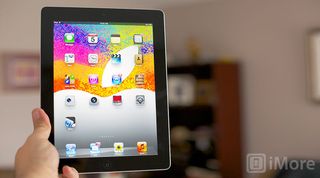
If you need to do computing but don't want to lug around a laptop, you want an iPad
Pros: 9.7-inch screen. Shoots 5mp photos and takes 1080p videos. 16GB, 32GB, and 64GB options. Available with black or white front plates. Plays audio and video, reads ebooks. Runs iOS, all App Store apps, including hundreds of thousands of tablet-specific iPad apps. Weighs 652 grams. Starts at $499. Cellular/LTE available.
Cons: Heavier than iPad mini, not as functional as a full MacBook for power users.
Bottom line: If you don't need a laptop but still want a big screen and a powerful, convenient way to get a lot of things done, get an iPad 4. Add a keyboard for netbook like power and a way better experience!
More info: iPad 4 review & feature guide
- Starting at $499 - Buy now
Note: If you don't care about the latest and the greatest, you can grab the 2010/2011 iPad 2 with a worse screen, no LTE, and really bad cameras, and save $100.
MacBook Air
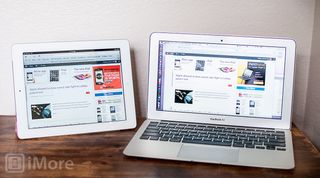
If you need a full computer but portability is more important than power, get the MacBook Air
Pros: 11 or 13-inch screen. Intel i5 or i7 processors. USB 3 and ThunderBolt ports. 4GB or 8GB or RAM. 64GB/128GB or 128GB/256GB storage options. Runs OS X and full desktop-class software. Weighs only 1.08 kg or 1.35 kg. 9-hours or 12-hours of battery life. Starts at $999.
Cons: No Retina display, no optical drives, lack of high-powered graphics options hinders some types of software.
Bottom line: The new Haswell-based MacBook Airs get ridiculously long battery life. If you want something portable but still need to be able to run Office, Photoshop, Xcode, etc., get a MacBook Air. If you need maximum portability, get the 11-inch model. If you need maximum pixels, get the 13-inch model.
- Starting at $999 - Buy now
MacBook Pro
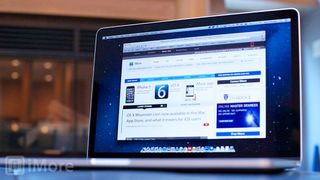
If you need a powerful computer that's still portable, you need the MacBook Pro
Pros: 13- or 15-inch Retina displays. Dual-core i5 or quad-core i7 processors. USB 3 and ThunderBolt ports. 8GB or 8 GB/16GB of RAM. 128GB/256GB or 256GB/512GB of storage. 7-hour batter life. Weighs only 1.62 kg or 2.02 kg. Starts at $1699.
Cons: Retina saps a lot of graphics power. No optical drives.
Bottom line: If you want the state-of-the-art of laptops with the best displays in the business and power to match, get a MacBook Pro.
- Starting at $1499 - Buy now
Note: If you don't want a Retina display but do want a DVD drive, you can save some money and by the standard 13- or 15-inch (non-Retina) MacBook pros.
Mac mini

If you need a small Mac you can slide into any setup or workflow, you want the Mac mini
Pros: Dual-core i5 or quad-core i7 processors. USB 3, Ethernet, HDMI, FireWire 800, and ThunderBolt ports. 2GB, 8GB, or 16GB of RAM. Conventional hard drive, SSD, or Fusion Drive options. Starts at $599.
Cons: Requires separate display. No internal expansion ports.
Bottom line: If you want a Mac to replace or add to an existing PC setup, get a Mac mini. It's the cheapest way to get a Mac on your desktop.
- Starting at $599 - lirel="nofollow">ss_tl?ie=UTF8&camp=1789&creative=390957&creativeASIN=B007476KRY&linkCode=as2&tag=imoreb-20" rel="nofollow">Buy now
iMac
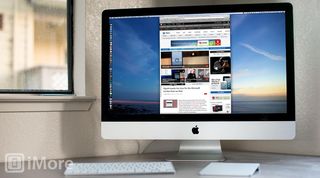
If you need full desktop power in an all-in-one package, you want the iMac
Pros: 21.5- and 27-inch displays. Quad-core i5 or quad-core i7 processors. 8GB or 16GB of RAM. Conventional hard drive, SSD, or Fusion Drive options. GT 640M, GT 650M, GTX 660M, GTX 675MX, or GTX 680MX graphics options. Ethernet, UBS 3, and ThunderBolt ports. Incredibly thin design.
Cons: No internal expansion ports.
Bottom line: If you want an incredibly powerful Mac wrapped in an incredibly elegant design, get an iMac.
Mac Pro
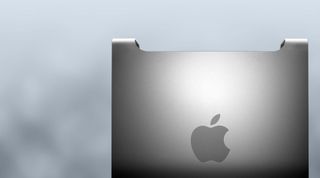
If you need the maximum power and flexibility of a tower computer, you want the Mac Pro
Pros: Configurable up two 2.4GHz 6-core Intel Xeon E5645 processors, 64GB of RAM, 8TB of internal storage, 2 optical drives, 2 ATI Radeon HD 5770 or 1 ATI Radeon HD 5870 graphics cards, USB 2 and FireWire 800 ports.
Cons: Requires separate display. No USB 3 or ThunderBolt ports. Architecture hasn't been updated in a long, long time.
Bottom line: If you need a Mac with as many cores as possible, and want to be able to swap expansion cards, internal drives, and upgrade graphics cards, get a Mac Pro.
Note: Apple has already announced an all-new, radically redesigned Mac Pro is coming later this year. Unless you hate what you've seen so far, or are desperate for a big Mac right now, you should wait.
Your perfect back-to-school iOS device or Mac?
Are you buying anyone an iOS device or Mac to take with them back to school? Are you hoping to get one? Let me know what you're giving or looking to receive! What's your perfect Apple product for the new school year?

Rene Ritchie is one of the most respected Apple analysts in the business, reaching a combined audience of over 40 million readers a month. His YouTube channel, Vector, has over 90 thousand subscribers and 14 million views and his podcasts, including Debug, have been downloaded over 20 million times. He also regularly co-hosts MacBreak Weekly for the TWiT network and co-hosted CES Live! and Talk Mobile. Based in Montreal, Rene is a former director of product marketing, web developer, and graphic designer. He's authored several books and appeared on numerous television and radio segments to discuss Apple and the technology industry. When not working, he likes to cook, grapple, and spend time with his friends and family.
Most Popular




